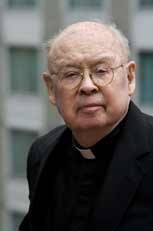It appeared that a common intuition had convoked these gatherings and sustained them. The American people must have realized that they were themselves the focus of the Bicentennial. This meant that the place to be on July 4 was in a crowd, because the crowd was an image of the nation. The people are, to be sure, only one of the two essential components of the United States. The American land is the other, but the continent is not marking any Bicentennial. The land, after all, was here for unimaginable eons before its seacoasts were filled with cities and its great grass plains turned into farms, and we can only presume that it will be here long after the Republic is a faint memory.
It was logical enough, therefore, to concentrate the Bicentennial exercises upon the people and their national history. Every town and city designed festive vehicles of its own, and the staff of America had first-hand experience of the celebration in New York City. The centerpiece of that program, as everyone knows by now, was an unprecedented assembly of two fleets--the Fourth International Naval Review which convened 53 military ships from 22 nations and the far more appealing Operation Sail 76 that filled the port of New York with over 200 sailing ships including 16 of the 20 largest active sailing vessels in the world, the so-called "tall ships."
Most Americans either came themselves from other countries or are descended from people who, freely or under constraint, migrated from Europe, Africa, Asia and Latin America. There could hardly have been, therefore, a more poignant and powerful symbol of the American story than the July 4 parade of those tall schooners, barks and barkentines that moved like ships in a dream past the Statue of Liberty and up the main channel of the Hudson River.
That night a spectacular display of fireworks lit up the lower harbor in a wide arc above the statue. It ended when a helicopter high in the sky towed a flag of red, white and blue lights, while the crowd massed at the Battery sang the "Star Spangled Banner." Elsewhere along the waterfront, thousands of people lined the highways and climbed out on the landfills at the rivers edge. They picked up that singing on the transitory radios that some of them carried, and then they sang too--but softly and tentatively as people are apt to do in circumstances of this sort. In fact, in its meditative mood and cadence, that song in the night seemed more like a prayer than an anthem.








